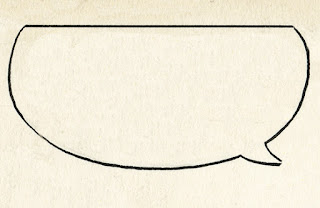Hundreds of talented illustrators are never mentioned in the
history books on illustration. For example,
Life Magazine employed an average of 25 different illustrators
every week. In
Life's first 50 years,
they produced over 60,000 illustrations. Yet who can remember more than a handful of their names?
Many of these "forgotten" illustrators were terrible and are better forgotten, but some did excellent work. They've been forgotten for reasons unrelated to quality; perhaps they only worked as an illustrator for a short time before moving into fine art. Perhaps they were ahead of their time, or behind it. They weren't influential as illustrators; they didn't start a whole new branch on the tree of illustration, or even a new twig, but their work at least qualifies as a blossom. And as Thomas Gray reminded us,
"Many a flower is born to blush unseen, and waste its sweetness on the desert air."
For the most part, the only way to find the work of these illustrators today is by sifting through the original publications where their work appeared Many of those publications are now crumbling with age.
I've been fortunate recently because older artists who clipped tearsheets from magazines have generously handed their collections down to me in the apparent belief that I'll help keep the torch burning. (Thanks, Nick Meglin!) I don't know a better way to honor this work than to show the pictures I like on this blog, in the hope that people will give them a second look.
Hank Vigona was born in 1929. In his twenties and thirties, he illustrated for
Fortune, Harpers, Argosy, Seventeen and
The New York Times. He worked in a loose style that I enjoy very much.
His heroes weren't the traditional icons of illustration, but rather Jack Levine, Daumier, and Goya.
Virgona had a trademark fluid line. He was not interested in "a literal translation of what you see optically" but rather "a mark made instinctively. "
Virgona developed his drawing skills on the NY subway. He said, "I felt the need to work from life and people rather than still
lifes or works out of my head. It dawned on me that going and coming to
work I was surrounded by a great many models - and they were free
except for the cost of a copy of the New York Times in which I hid my
sketch pad in order to look like I was either reading or doing the
crossword puzzle. In this way, I did about 2,000 drawings, many of which
I worked up later in color."
Virgona abandoned illustration in the late 1960s. He recalls, "I was never
really a great success in the commercial field since I only did what
was called editorial work which meant you didn't have to make all the men
handsome or the girls pretty - a good thing since I could do neither,
and you could only really make good money if you could. So at one point I
said enough, since I wasn't making more than enough to exist, I might
as well do exactly what I wanted to do."
Later in life, Virgona's fine art inspirations include
Giorgio Morandi who devoted his life to painting small bottles and vases on a table top. Friends report that at age 85, Virgona continues to work as a
fine artist and still draws every day in the subway from his Queen’s home to
his Manhattan studio. Here is a lovely still life:
Scholars and commentators have mapped and classified all the influential illustrators. We know that dozens of illustrators work today on
the branch of illustration inspired by the work of Frank Frazetta. Ronald Searle influenced the direction of pen and ink
work in the 20th century, just as
Charles Dana Gibson influenced illustrators at
the end of the 19th century. Bernie Fuchs
set the popular style in the 1960s, inspiring dozens of imitators. Around
the same time, Push Pin studios originated its own style.
But young illustrators looking for fresh inspiration might do well to look beyond the usual suspects. Put aside the established taxonomy and consider whether life remains in the seeds planted by some of these lesser known illustrators.
UPDATE: You will see in the comments section that Mr. Virgona's nephew is a filmmaker who is currently preparing a documentary film about his uncle. The film looks very promising, and for certain levels of support through Indiegogo, Mr. Virgona is even offering some of his original subway drawings. A worthy cause definitely worth looking into.






























